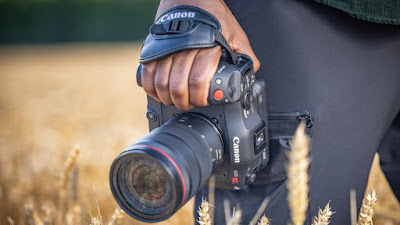Working With Digital Age
The era to era evolving technology is one of the main factors that tremendously affects the field of photojournalism. From the use of Dry Plate Collodion to the current Wi-fi Enabled DSLRs. This is a huge leap for the photojournalist as it makes their job easier and yield with better quality image. From the video, Before There Were Pixel- Part 1 , Professor Nordell described the use of the historic bulky camera during Crimean War in 1855 that required various gears to make photography possible. As we try to imagine the situation of the previous war photographer like Roger Fenton documenting in the middle of the battlefield using the time-consuming camera, it is incomparable from today's cameras. Unfortunately, those camera from the past cannot take action photos, the photographer/photojournalist has to instruct the subjects to stay still so that the image is not blurry. Nowadays, we can even use different technologies that takes quality photos, e.g. Iphone, Ipad, DSLR, Drones, and etc. Photos can also be taken in burst or in a matter of seconds that enable to capture the action of the subject which is an essential criteria in the field of photojournalism. Professor Nordell in, The Digital Mindset, added that photography has become a digital where cameras are not only use for pictures but simultaneously for videography as well- commonly used in producing Hollywood movies. Cameras like the image below, the Canon EOS C70, is an example of this new dimension use for film making.
 |
| Photo by: Canon |
Back in September 2005, the Nikon announced the world's first built-in Wi-fi Enabled Digital Camera. The Coolpix 1 and Coolpix 2 are the two hybrid models that were placed in the market. In the article of World's First Built-In Wi-Fi -Enabled Digital Cameras, stated that "these groundbreaking cameras allow consumers to immediately transmit images wirelessly directly to a computer or to any PictBridge-enabled printer equipped with the optional Nikon Wireless Printer Adapter (PD-10), for wireless printing". This gives the photojournalists/photographers a freedom from the traditional way of uploading the image using the cables. From the video, The Digital Mindset, Professor Nordell also stated that from the past in order to publish the image firstly, it needs to undergo a long process, from taking the photo, to writing the story using the typewriter and printing the image. Nowadays, it just needs couple clicks and then the journalist can be able to transmit the images to the photo agencies or clients. However, the advantages of the advancing technology has also its downfall. Now that the cybersecurity is also evolving, the connection of the gadgets like the Wi-fi enabled camera, Ipads, phones and etc. are also at risk to be monitored by the high tech surveillance equipment. In the article, How The Syrian Government Hunts Journalists Covering Its Atrocities, Neil Ungerleider asserted that "Journalists traditionally use satellite phones to report from war zones
and to escape surveillance. However, satellite phones can be monitored
and locations can be triangulated from their signals–it just takes a lot
of hard work". He also added that "Syrian government officials are actively using Internet surveillance and high-tech tools to track down rebels". This advancement is making the photojournalists vulnerable to the danger imposed especially by the government to keep them from publishing the real happenings in the world.
 |
| Photo by: Phys.org |

Comments
Post a Comment